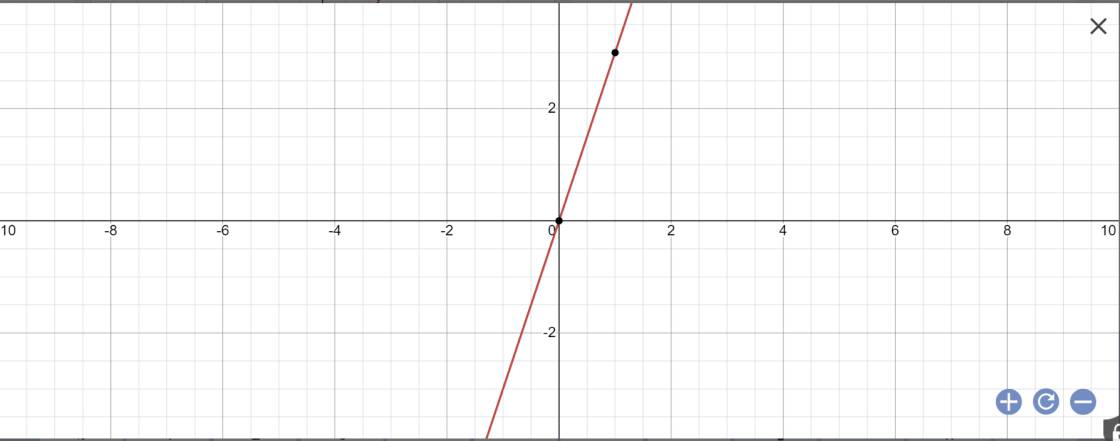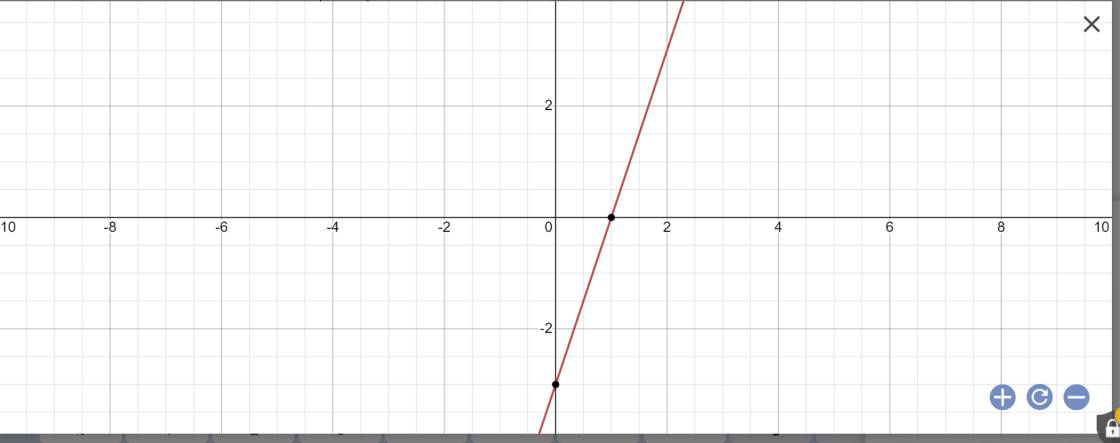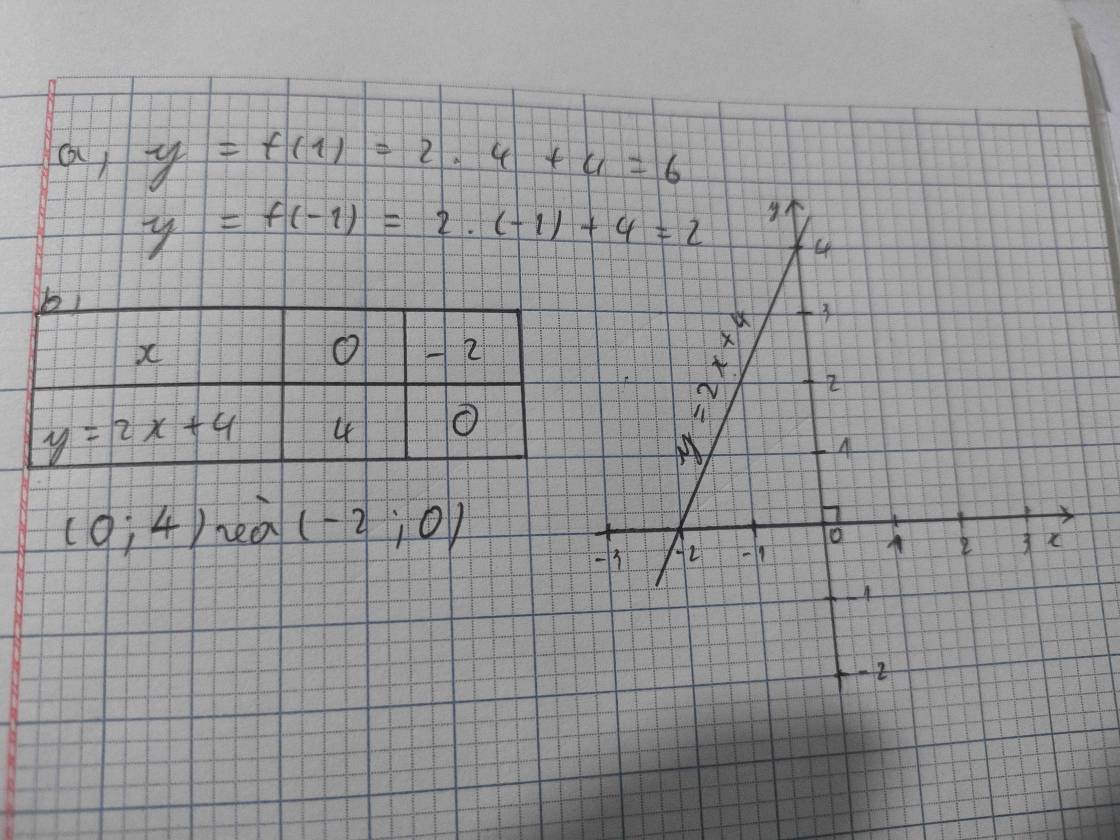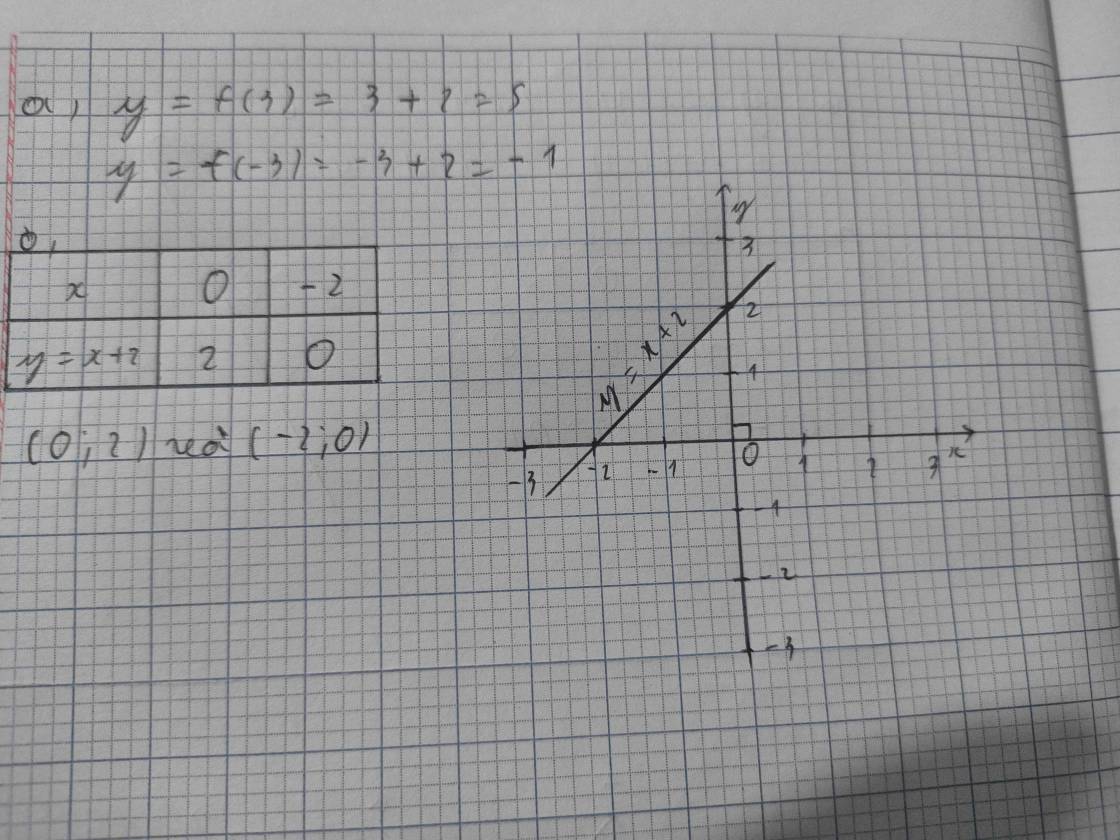Hãy nhập câu hỏi của bạn vào đây, nếu là tài khoản VIP, bạn sẽ được ưu tiên trả lời.

a: \(f\left(0\right)=3\cdot0=0\)
\(f\left(1\right)=3\cdot1=3\)
b:

c: \(f\left(-2\right)=3\cdot\left(-2\right)=-6=y_A\)
=>A(-2;-6) thuộc đồ thị hàm số y=3x
\(f\left(2\right)=3\cdot2=6\ne-6=y_B\)
=>B(2;-6) không thuộc đồ thị hàm số y=3x

Câu 5:
a: Khi m=3 thì \(f\left(x\right)=\left(2\cdot3+1\right)x-3=7x-3\)
\(f\left(-3\right)=7\cdot\left(-3\right)-3=-21-3=-24\)
\(f\left(0\right)=7\cdot0-3=-3\)
b: Thay x=2 và y=3 vào f(x)=(2m+1)x-3, ta được:
\(2\left(2m+1\right)-3=3\)
=>2(2m+1)=6
=>2m+1=3
=>2m=2
=>m=1
c: Thay m=1 vào hàm số, ta được:
\(y=\left(2\cdot1+1\right)x-3=3x-3\)
*Vẽ đồ thị

d: Để hàm số y=(2m+1)x-3 là hàm số bậc nhất thì \(2m+1\ne0\)
=>\(2m\ne-1\)
=>\(m\ne-\dfrac{1}{2}\)
e: Để đồ thị hàm số y=(2m+1)x-3 song song với đường thẳng y=5x+1 thì \(\left\{{}\begin{matrix}2m+1=5\\-3\ne1\end{matrix}\right.\)
=>2m+1=5
=>2m=4
=>m=2

Thay x=4 vào \(y=f\left(x\right)=\sqrt{x}\), ta được
\(f\left(4\right)=\sqrt{4}=2\)
=>A(4;2) thuộc đồ thị hàm số \(y=f\left(x\right)=\sqrt{x}\)
Thay \(x=2\) vào \(y=f\left(x\right)=\sqrt{x}\), ta được;
\(f\left(2\right)=\sqrt{2}>1\)
=>B(2;1) không thuộc đồ thị hàm số \(y=f\left(x\right)=\sqrt{x}\)
Thay \(x=8\) vào \(y=\sqrt{x}\), ta được:
\(y=\sqrt{8}=2\sqrt{2}\)
=>\(C\left(8;2\sqrt{2}\right)\) thuộc đồ thị hàm số \(y=\sqrt{x}\)
Thay \(x=4-2\sqrt{3}\) vào \(y=\sqrt{x}\), ta được:
\(y=\sqrt{4-2\sqrt{3}}=\sqrt{3-2\cdot\sqrt{3}\cdot1+1}\)
\(=\sqrt{\left(\sqrt{3}-1\right)^2}=\left|\sqrt{3}-1\right|=\sqrt{3}-1< >1-\sqrt{3}\)
=>\(D\left(4-2\sqrt{3};1-\sqrt{3}\right)\) không thuộc đồ thị hàm số \(y=f\left(x\right)=\sqrt{x}\)
Thay \(x=6+2\sqrt{5}\) vào \(y=f\left(x\right)=\sqrt{x}\), ta được:
\(f\left(6+2\sqrt{5}\right)=\sqrt{6+2\sqrt{5}}=\sqrt{\left(\sqrt{5}+1\right)^2}\)
\(=\left|\sqrt{5}+1\right|=\sqrt{5}+1\)
vậy: \(E\left(6+2\sqrt{5};1+\sqrt{5}\right)\) thuộc đồ thị hàm số \(y=f\left(x\right)=\sqrt{x}\)

A=\(2^0+2+...+2^8-\left(0+1+...+8\right)-9.4\)
=\(2^9-1-36-36=439\)



a:
b: \(f\left(2\right)=\dfrac{1}{2}\cdot2=1\)
\(f\left(1\right)=\dfrac{1}{2}\cdot1=\dfrac{1}{2}\)
\(f\left(-2\right)=\dfrac{1}{2}\cdot\left(-2\right)=-1\)
\(f\left(-1\right)=\dfrac{1}{2}\cdot\left(-1\right)=-\dfrac{1}{2}\)
\(f\left(0\right)=\dfrac{1}{2}\cdot0=0\)
c: f(x)=2
=>\(\dfrac{1}{2}x=2\)
=>x=2*2=4
f(x)=1
=>\(\dfrac{1}{2}x=1\)
=>\(x=1:\dfrac{1}{2}=2\)
f(x)=-1
=>\(\dfrac{1}{2}x=-1\)
=>\(x=-1\cdot2=-2\)
d: \(f\left(-1\right)=\dfrac{1}{2}\cdot\left(-1\right)=-\dfrac{1}{2}\ne\dfrac{1}{2}=y_A\)
=>A(-1;1/2) không thuộc đồ thị hàm số y=1/2x
\(f\left(-1\right)=\dfrac{1}{2}\cdot\left(-1\right)=-\dfrac{1}{2}=y_B\)
=>\(B\left(-1;-\dfrac{1}{2}\right)\) thuộc đồ thị hàm số y=1/2x